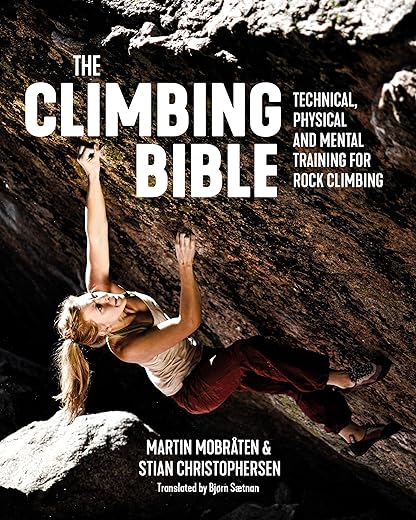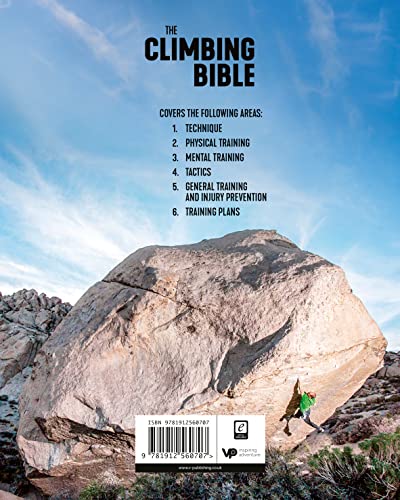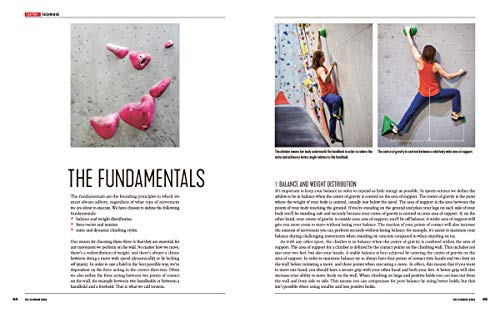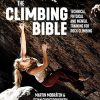The Climbing Bible: Technical, physical and mental training for rock climbing: 1
£21.40£28.50 (-25%)
More and more people around the world are discovering how great climbing is, both indoors and outdoors. The Climbing Bible by internationally renowned climbers and coaches Martin Mobråten and Stian Christophersen is a comprehensive guide to help you train effectively to become a better climber.
The authors have been climbing coaches for a number of years. Based on their own extensive experience and research, this book collates the best European training techniques into one book with information on how to specifically train for the technical, physical and mental performance factors in climbing including endurance, power, motivation, fear of falling, and much more. It also deals with tactics, fingerboarding and finger strength, general training and injury prevention, injuries related to climbing, and planning for training.
It is illustrated with 400 technique and action photos, and features stories from top climbers as well as a foreword by climber and bestselling author Jo Nesbø. The Climbing Bible will help and motivate you to improve and develop as a climber and find even more joy in this fantastic sport.
Read more
Additional information
| Publisher | First Edition (3 Sept. 2020), Vertebrate Publishing |
|---|---|
| Language | English |
| Paperback | 352 pages |
| ISBN-10 | 1912560704 |
| ISBN-13 | 978-1912560707 |
| Dimensions | 20 x 2.8 x 25 cm |





by Dave Hume
Possibly the best book yet on training for climbing, and that’s quite a crowded field. Books on climbing technique have been around for a long time. C.T Dent’s “Mountaineering” (1911), Guido Rey’s “Alpinisme Acrobatique” (1919) and Alan Blackshaw’s “Mountaineering” (1966) are examples of books that aimed to instruct and inform climbers of the time on technique and equipment, but climbing has moved on a long way in recent decades, and instructional books have trended towards more intensive and systematic approaches to becoming a better climber.
The authors, Martin Mobråten and Stian Christophersen, both climb and coach at very high standards of difficulty (8c+ and 8c for those who are in the know). Christophersen is also a physiotherapist and coaches the Norwegian climbing team. The book covers Technical, Physical and Mental training, with three additional chapters on Tactics, General training and injury prevention, and finally, training plans. It is richly comprehensive, and their experience in coaching shines through each section. Interviews with leading climbers – entitled A Climber’s Story – expand on particular themes and give fascinating insights – who would have thought that you could write a PhD on using deadhangs for finger strength training? (p.114). The illustrations are excellent throughout and there is an even balance between indoor and outdoor settings.
The authors emphasise the primacy of technique and remind us that climbing is, or should be, fun. The excellent foreword by Jo Nesbo, Norwegian thriller writer and recent climbing convert, underlines the fun and games strand, and connects this to systematic training as a way of enhancing your enjoyment and simply getting better at something you enjoy. Pretty wise words – training is not exclusively about obsessive preparation by obsessive athletes for the climbing World Cup and ticking the highest grades. Cherry-picking any one of the specialist topics in the book should help any climber get a bit better at what they do. My favourite injunction from the Physical Training chapter is “Climb with the body you’ve got”. If only the authors knew. Some topics are rarely covered in other training books – for example skincare for crimping, climbing during pregnancy, and injury risk for young climbers, but it is the main focusses on movement technique, doing training exercises with precision and managing the mental side of climbing that make this book a treat.
As befits its title of The Climbing Bible, it ends with Ten Commandments, and none of them are “Don’ts”.
This is an excellent read, and a very good translation. There’s stuff in here for climbers at any level. Read, absorb, then just do it and have fun.
by Philippa Lewis
This is fantastic! I’m pretty sure it would be impossible to read it and not become a better climber. I was really impressed by how comprehensive and accessible this manual is, thoroughly covering the physical side of training, and also with sections on technique, mental training, and tactics. There’s a massive amount of information covered, but it’s split into manageable sections and would be easy to quickly dip into if you just want a bit of structure or focus before starting a training session. It’s grounded in plenty of real life examples and interviews with top climbers, and it’s really helpful to see how people have tried the advice and found it to be helpful. It was brilliant and inspiring to see equal gender representation in the many photos, and great to see a quick discussion of climbing during pregnancy – I think this is the first time I’ve ever seen any mention of this in a training guide!
I found the mental training section really valuable. It covers several different sections – motivation, confidence, fear of falling and dealing with failure, and gives practical advice on how to deal with anything you’re struggling with. There is a huge amount of stuff to work through and implement in your own climbing.
The technique section is particularly accessible, and really well explained. There’s plenty of clear photos to show exactly what’s being explained, and the guide does a really good job of catering for both beginner climbers and also covering more advanced techniques. The photos are also good for helping to summon up some motivation on those days when you really don’t feel like training!
The physical training includes plenty of exercises that can be done at home with minimal equipment – surprisingly useful this year! I manage to injure myself fairly regularly climbing and haven’t really known where to start with conditioning and injury prevention exercises, but the section on this is really clear and has given me several things to start trying that I can do at home.
The only thing not covered is nutrition, although there are plenty of specific guides already available on that and it’s probably too big a topic to slot into this as well as everything else.
Overall, it’s an incredibly inspiring and practical guide, perfect for anyone who wants a comprehensive capture of all the different training elements that need to come together to climb harder.
by Sarah Spencer
Bought as a present and well liked
by Kevin
If you are into climbing especially if quite new, you need this book. ????
by Cathy
My daughter, who rarely reads anything(!), loves this book. I gave it to her at Christmas and it’s still on her bedside table for browsing. She loves climbing and there are a lot of really useful – illustrated – information, tips and techniques. Would definitely recommend.
by MS C.
It’s a present
by McC
Nice enough, would have liked more technical rope and gear placement info for myself. Excellent if you want the topics covered, obviously not so much if you wanted your interests covered in more detail. Areas like exercises and injuries are in a lot of detail and I did not really want those myself. Correct horse for the correct course.
by Ben
Tremendous respect for the authors. They’ve clearly put in loads of hard work, not to mention the years of experience that must go into being able to compile something like this. I am not regretting buying the book, especially given the reasonable price tag for 352 pages of material with loads of interesting photos and stories. Considering a copy of most climbing magazines cost $8-15 alone, I’d say this is a great bargain. Thanks to Marten and Stian for putting this out there!
Trying to sound as humble as possible, I’m an advanced climber and found certain aspects of the book very interesting like the focus analogy, and will certainly put what I’ve read to good use. On the whole, the book seems to take a bit of a wider, or general, focus if I can use the authors own technique. It’s certainly comprehensive. I found it lacking in sufficient detail at times to be a truly effective training guide.
If you’re a climbing junky, I’d say it’s worth it. Just don’t expect this book to change your life. Pound for pound, I think Dave Macleods book packs the most punch.